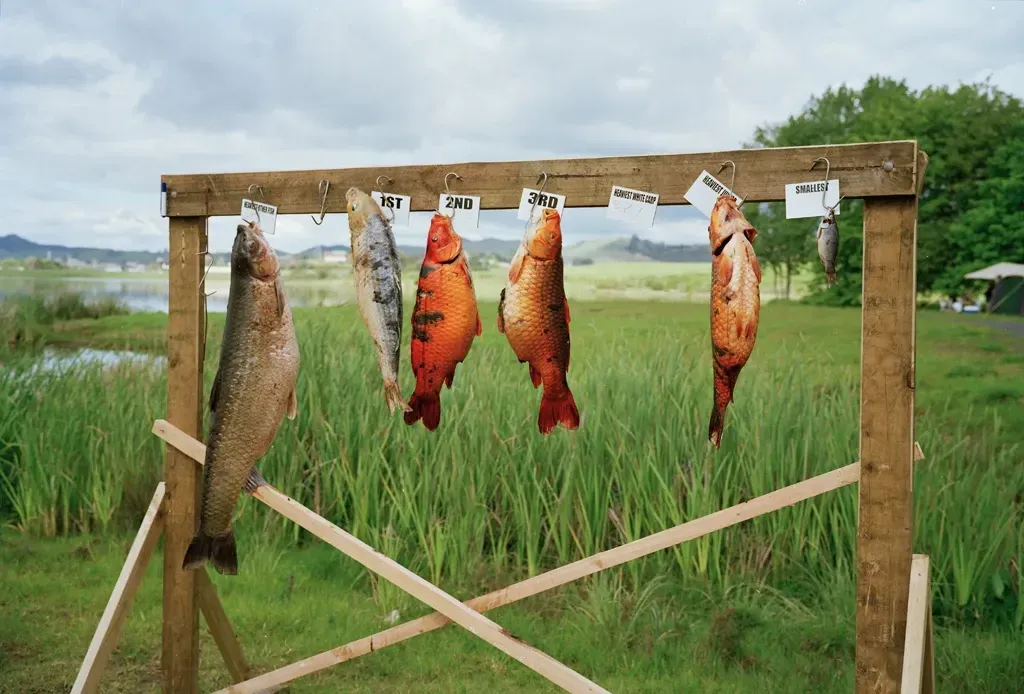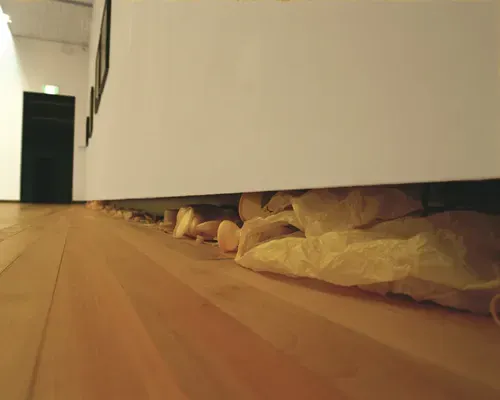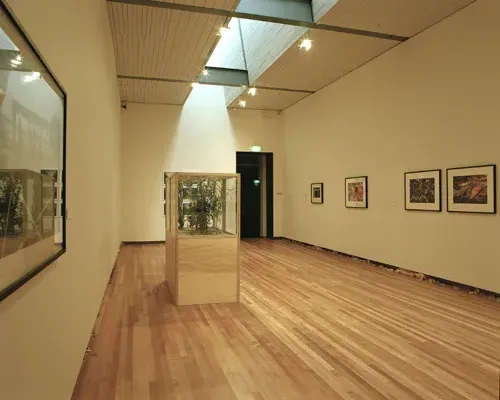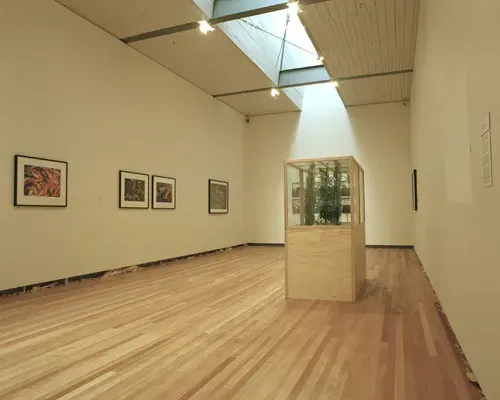Indoor Gardens
Written by
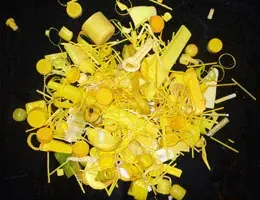
By Mark Amery
The title Community Garden, for a show of four Wellington artists at Michael Hirschfeld Gallery, conjures up images of artists heading downtown to potter around their plots, share gossip in the potting sheds and come out cradling prized creations.
In truth however the public gallery can present as estranged environment for the artist as the exhibition hall is for the giant pumpkin grower. Despite the proliferation of installation based work and performance, for most it remains a tightened display space rather than a place of growth.
That’s felt keenly in this engaging exhibition where four artists present examples of art that demonstrate their direct engagement with the world outside their studios.
Together with a scientist Jenny Gillam observes stick insects, Wayne Barrar visits a Waikato event where people kill koi carp with bows and then mulch them, Rob Cherry collects yellow plastic off Evans Bay beach in half hour periods to total an eight hour working day and, marking time with his camera, over 15 months Andy Palmer takes photographs from outside the gate of Tanera Park Community Garden. Their work stresses the timeless artificiality of the gallery environment as a heavily cultured community garden itself.
The nature of the new cell-like Hirschfeld Gallery space upstairs at City Gallery emphasises this further. In its ten-year history it has played an important role in smartly showcasing some of the city’s finest artists. With the new space opening late last year it gets a purpose-built space at the back of the main building. The old space, an old bar area next to Nikau Café, had the symbolism of being a physical addition to the main architecture, outside one of the gates to the main gallery. To exhibit there felt like you’d made it to the convivial edge of the institution, rather than had been accepted to its bosom (as Andy Palmer is outside Tanera Park). Yet what was wonderful about that space, unlike the more hermetically sealed new gallery, was its physical connection to the outside world.
Artists up here can feel as isolated from the world as Gillam’s stick insects in their vivarium, or Barrar’s fish out of water. Yet artists shouldn’t expect to feel too comfortable in such carefully curated and calibrated environments. I do like how curator Abby Curnane’s show has a rich layering of openings onto ideas around communities and gardens, with strong interactive links between the works.
At the same time it’s an engaging complex group show put into a small isolated space, while the gallery’s main spaces have been dominated by large solo exhibitions. That’s about to change with Heather Galbraith’s Ready to Roll group show opening this weekend. It provides some consolation after the postponement of national survey exhibition Prospect this year, and the sense of community that provided.
Rob Cherry’s lines of bright yellow plastic (everything from plastic toy cars to piping) poking out from under the gallery skirtings feels particularly uncomfortable. They nicely suggest the inner workings of the building and the sense of a contaminated exterior world leaching into the antiseptic gallery space. Yet the work would sing stronger given more space. As a broken ring of items it loses the allusion to the tideline Cherry collects from - a strong contemporary take on the environmental performance actions of the likes of Richard Long and Andy Goldsworthy. Likewise Andy Palmer’s rewarding meditation on the photographer’s distance and relationship to a site over time, feels unduly constrained and would have benefited from more images and space.
Placing plants inside buildings isolates them from the ecosystem they belong to. We treat them as isolated sculptural objects rather than homes for a multitude of lifeforms. Jenny Gillam emphasises this beautifully with the exhibition of living stick insects behind glass with Pohutukawa, Kanuka and, that resilient imported domestic plant, the Conifer. On the wall is a graph marking the movement around these plants of the insects, with genuine scientific observation going on to try and see how conscious the insects are of staying on plants that best camouflage them.
This living sculpture is a great contemporary ready-made. Unlike typical artworks the stick insects don’t seek to draw attention to themselves, and in scientist Steve Trewick’s comment that a stick insect must decide whether to eat a plant or to use it as camouflage there is a rich metaphor for the artist deciding how far to stick out from the pack.
Wayne Barrar’s current research into national biosecurity issues pokes away at the ironies of how one habitat’s treasure is another’s pest. There’s an image of prized Kopi Carp feeding in Singapore, next to another of them being flung like performing dolphins into the ‘Storman Norman’ mulcher here. With a strong eye for ways to animate the issues he explores, Barrar’s work is full of rich meditations on our framing and dislocation of nature.
Community Garden, Michael Hirschfeld Gallery, until 20 June
